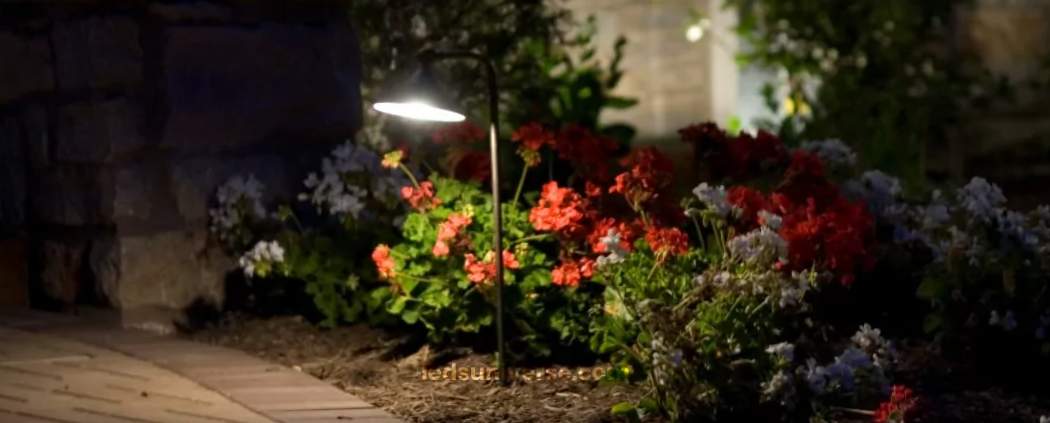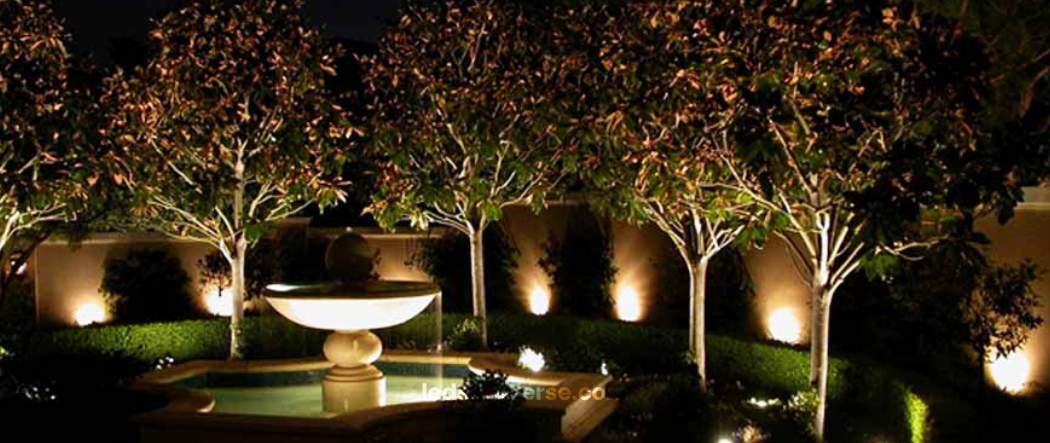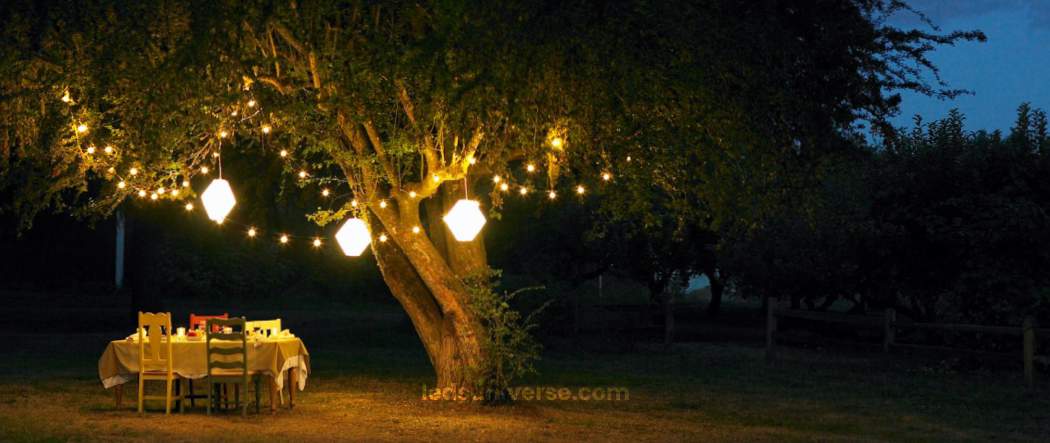Garden lighting has the power to completely transform your outdoor space, turning a simple garden into a magical, inviting retreat once the sun goes down. With just the right mix of soft glows, dramatic accents, and thoughtful placements, lights can highlight the beauty of plants, paths, and architectural features, while also creating a cozy atmosphere for evening relaxation or gatherings. Whether you’re aiming for a serene escape or a lively entertaining area, the right lighting design brings your garden to life in ways that daylight alone never could.
Garden lighting not only enhances the aesthetic appeal of the garden but also creates an inviting atmosphere, allowing homeowners to enjoy their outdoor spaces after the sun goes down. Well-thought-out lighting can emphasize architectural features, draw attention to specific plants or pathways, and make the garden more welcoming.
Reach out for free lighting consultation
Table of Contents
ToggleGarden lighting does more than illuminate pathways or provide visibility during the night. It has the power to evoke moods, set tones, and bring a completely new dimension to the outdoor environment. Proper lighting can accentuate different aspects of the garden, from plant textures to water features, giving them new life after dark.
Lighting a garden effectively requires a balance of practicality and aesthetics. While it’s crucial to ensure safety and visibility, lighting can also be used to craft an enchanting outdoor ambiance. Garden lights bring out the character of the garden, often creating a magical feel where plants, trees, and structures are bathed in soft glows or bold highlights.
While designing a garden lighting plan, the focus should be on how the lighting serves the purpose of making the space more usable and enjoyable. Lighting up pathways, driveways, and outdoor seating areas makes it easier and safer to navigate the garden at night. Moreover, strategic illumination can highlight the architecture of the house or garden, draw attention to particular plants, and make water features sparkle. These carefully placed light fixtures transform what might be an ordinary garden during the day into a serene and cozy retreat at night.
A well-lit garden is not just aesthetically pleasing but also contributes to the security of your home. When areas like driveways, garden paths, and entrances are properly lit, it reduces the risk of trips or falls and discourages intruders from lurking in the shadows. Motion-activated lights can add an extra layer of security, detecting movement and casting light where necessary.
Additionally, illuminating key points of entry, staircases, and raised garden beds makes the outdoor space more accessible during the night. This combination of safety and security allows you to enjoy your garden more freely while giving peace of mind about the protection of your property.

Understanding the different types of garden lighting helps in designing a space that balances practicality with ambiance. There are several lighting options that cater to diverse preferences, purposes, and garden layouts.
Ambient lighting provides a general level of illumination that enhances the overall atmosphere of the garden. It serves as the foundation of any lighting scheme, creating a comfortable and inviting environment. Soft, diffused light that washes over the garden creates a natural glow, giving the space a sense of calm.
This type of lighting is usually placed at strategic points, such as around garden seating areas or along patios, and is often achieved through lanterns, string lights, or softly glowing fixtures. The gentle illumination makes the garden feel open and welcoming without overpowering the space.
Accent lighting is used to draw attention to specific features in the garden, such as statues, water fountains, or trees. By placing a spotlight or a well-positioned fixture near these focal points, accent lighting creates a dramatic effect, showcasing the garden’s unique elements.
Uplighting is a popular technique within accent lighting. This involves placing the light source at ground level and aiming it upward to emphasize the height and form of trees or architectural features. Another method is downlighting, where fixtures are mounted above the object or area to cast a soft glow downward.

Task lighting provides focused illumination for practical tasks, such as cooking on a garden grill, reading on the patio, or walking along a garden path. It’s designed to ensure that specific tasks can be completed with ease, offering sufficient light where precision is needed.
Task lighting often includes spotlights, pathway lights, and stair lights. These types of fixtures are typically more focused and directional, helping to prevent glare while illuminating the necessary areas. The right placement of task lighting fixtures allows for functionality without compromising the ambiance of the garden.
Decorative lighting adds character and personality to the garden. These lights often serve as a decorative element in themselves, such as colorful lanterns, fairy lights, or sculptural fixtures. Decorative lighting plays a significant role in creating themed or festive atmospheres and can be used to set the mood for special events or gatherings.
While decorative lighting may not provide intense illumination, it has a strong impact on the aesthetics of the garden. Twinkling lights strung across a pergola, lanterns lining the garden path, or solar-powered lamps dispersed among flowerbeds all contribute to a charming and whimsical atmosphere.
Choosing the correct lighting fixtures and techniques for your garden requires considering the layout, purpose, and style of the space. The type of plants, pathways, seating areas, and architectural features within the garden all influence the placement and type of lights to be used.
One of the primary steps in planning garden lighting is identifying the key focal points of your space. These might include large trees, water features, flower beds, or sculptures. Accent lighting can then be applied to these areas, drawing attention to their beauty even at night.
For example, lighting up a tree from below with an uplight can bring out the natural beauty of its leaves and branches. Alternatively, placing lights around a pond or fountain can highlight the water’s reflective properties, creating a serene and peaceful atmosphere.
In addition to aesthetics, the functionality of the lighting should always be considered. Pathways should be well-lit for ease of navigation, especially in larger gardens where visibility may be limited. Steps, entrances, and garden borders are other key areas where task lighting will improve usability without sacrificing style.
Functionality can also extend to outdoor cooking or dining areas, where additional lighting is needed to ensure visibility while preparing food or eating. Recessed lighting in outdoor kitchens or soft lighting around dining tables can create the perfect balance between practicality and ambiance.
The selection of light fixtures should complement the garden’s design style. If your garden has a modern aesthetic, sleek and minimalist lighting fixtures can enhance the clean lines and structured layout. On the other hand, if the garden has a rustic or traditional feel, lanterns, wrought iron lamps, or vintage-inspired fixtures may be more appropriate.
Solar-powered lights are another popular choice, as they offer an environmentally friendly and low-maintenance option. These lights absorb sunlight during the day and automatically turn on at night, making them a convenient option for homeowners who want hassle-free lighting solutions.

Cozy garden lighting transforms your outdoor space into a warm and inviting haven. The right combination of lighting techniques and fixtures can make the garden feel like an extension of the home, providing a place for relaxation and enjoyment.
To create a cozy ambiance in the garden, opt for lighting with a warm and soft glow. Warm white or amber tones can evoke feelings of comfort and relaxation, making the space feel more intimate. String lights, lanterns, and low-level lighting are excellent choices for achieving this effect.
Placing soft lights around seating areas, beneath trees, or along garden paths helps to create a serene atmosphere. Additionally, soft lighting reduces the harshness of shadows, allowing for a more balanced and soothing environment. The goal is to make the space feel inviting without overwhelming it with overly bright or cold lighting.
Creating a cozy garden involves layering different types of lighting. This means combining ambient, accent, and task lighting in such a way that each layer enhances the overall mood. By using multiple light sources, you can create depth and texture in the garden, making the space feel more dynamic and alive.
For example, soft ambient lighting can illuminate the general area, while accent lighting can highlight specific plants or architectural features. Task lighting can then be used in strategic areas, such as near seating arrangements or outdoor dining spaces. Layering these types of light ensures that the garden feels both practical and inviting.
Incorporating natural elements like plants and water features into the lighting design can also enhance the cozy feel of the garden. Uplighting trees or placing lights along the edges of flowerbeds helps to highlight the garden’s natural beauty, allowing it to become a central part of the space’s ambiance.
Water features, such as ponds or fountains, can be lit to create a calming effect. The reflection of lights on the water can introduce a soft, twinkling glow that adds to the serenity of the garden. Fire features, such as fire pits or torches, also contribute to the warmth and coziness of the space by providing both light and heat.
While the aesthetic aspects of garden lighting are essential, practical elements of installation are equally important. Ensuring that your lighting system is functional and easy to maintain will help extend the lifespan of your garden lights.
A fundamental choice when installing garden lights is the type of power source. Hardwired electric lights provide reliable illumination but often necessitate professional installation to adhere to safety standards and local electrical codes. Conversely, solar-powered lights have gained popularity for their straightforward setup and environmental benefits. They don’t require any wiring, operating independently by charging during the day and illuminating at night.
For larger gardens, combining solar-powered lights with hardwired options can offer the best of both worlds. This hybrid approach allows for versatile placement while ensuring that essential areas receive consistent lighting.
The effective placement of garden lights is crucial for achieving the desired ambiance. Fixtures should be strategically positioned to deliver sufficient light without overwhelming the space. It’s important to consider how the light will interact with the landscape, enhancing the garden’s features while avoiding harsh shadows or glare. Careful planning will ensure that your garden remains inviting and beautifully illuminated.
Garden lighting also allows homeowners to adapt their outdoor spaces to different seasons. Each season brings unique opportunities for enhancing the garden’s atmosphere, and lighting can play a pivotal role in this transformation.
As flowers bloom and greenery flourishes, spring and summer invite outdoor gatherings and activities. During these seasons, incorporating colorful string lights or lanterns can add a festive touch. Twinkling lights draped over trellises or pergolas can create an enchanting environment, perfect for evening barbecues or social gatherings.
In warmer months, pathway lights can guide guests through lush gardens, creating an inviting route to seating areas. Consider using solar lights in flower beds or around patios, as they require minimal upkeep and enhance the vibrant colors of blooming flowers.
Autumn brings cooler temperatures and a shift in the garden’s color palette. To create a cozy atmosphere during fall evenings, opt for warm-toned lighting. String lights with amber hues can enhance the earthy tones of autumn foliage, making the garden feel warm and inviting.
Incorporating fire pits or torches can also add warmth and light. These features create a focal point for gatherings while providing heat on chilly nights. Positioning lights near trees with changing leaves can highlight their beauty, creating stunning visuals against the twilight sky.
In winter, the garden often enters a more subdued phase. However, lighting can bring life to this season, transforming the outdoor space into a winter wonderland. White or blue lights can evoke a crisp, icy feel, while colorful lights can add cheer and brightness during darker months.
Consider illuminating pathways and steps with soft lighting to ensure safety during icy conditions. If there are evergreen trees or shrubs, wrapping them in lights can create a stunning visual display, making the garden feel festive and lively.
With the rise of smart home technology, integrating smart lighting solutions into your garden has become more accessible. Smart lighting can enhance the functionality and flexibility of garden lighting, allowing homeowners to control their outdoor ambiance with ease.
Smart lights can be controlled remotely through apps on smartphones or tablets, enabling users to adjust brightness, color, and timing. This technology allows homeowners to set schedules, turning lights on and off automatically based on their preferences. For instance, lights can be programmed to turn on at sunset, ensuring the garden is always welcoming as darkness falls.
Smart lighting systems often come with options to change colors, providing endless possibilities for mood setting. Homeowners can switch to warm tones for intimate gatherings or bright, cheerful colors for festive occasions. This adaptability allows the garden to cater to different moods and events, making it a versatile outdoor space.
Incorporating smart technology can also lead to more energy-efficient lighting solutions. Many smart bulbs use LED technology, consuming less power while providing excellent illumination. This efficiency not only reduces energy bills but also minimizes the environmental impact of outdoor lighting.
Ultimately, garden lighting should reflect your personal style and the unique character of your outdoor space. The design can be as simple or intricate as desired, allowing for a wide range of creative expressions.
One approach to personalization is to adopt a theme for the garden lighting. Whether it’s a coastal theme with lanterns and driftwood elements, a modern minimalist approach with sleek fixtures, or a whimsical fairy-tale aesthetic with string lights, choosing a consistent theme can unify the garden’s look.
Another way to personalize garden lighting is by integrating art and sculptures. Lighting can be used to highlight artistic elements, drawing attention to sculptures, birdbaths, or unique plant arrangements. Consider uplighting these features to create dramatic effects and enhance the garden’s overall visual interest.
Personalization doesn’t have to stop with the lighting fixtures themselves. Seasonal decorations, such as holiday-themed lights or festive displays, can bring life to the garden throughout the year. Using seasonal decor can allow homeowners to celebrate holidays and special occasions, making the garden a dynamic and engaging space.
Garden lighting plays a transformative role in enhancing the beauty, functionality, and ambiance of your outdoor space. Beyond just providing visibility, it creates a sense of atmosphere, highlights key features, and adds a touch of magic after dark. With thoughtful design and the right lighting techniques, you can elevate your garden into a place of relaxation, entertainment, and safety.
Whether using soft ambient lights for a cozy feel, accent lighting to showcase specific features, or task lighting for practical purposes, every choice contributes to the overall experience of the garden. Embracing seasonal changes, incorporating smart technology, and personalizing the design allows your garden to evolve with your needs and preferences. Ultimately, garden lighting invites you to enjoy the serenity, charm, and character of your outdoor space, no matter the time of day or season.